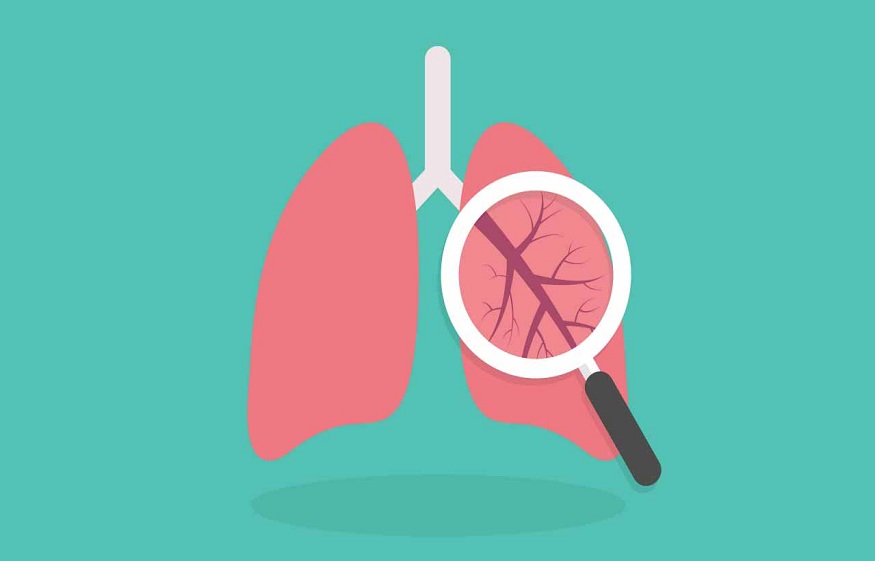Lung cancer or bronchopulmonary cancer is a common cancer, in clear progression in women. The main risk factor is active but also passive smoking.
What is lung cancer?
Lung cancer also called bronchopulmonary cancer or bronchial cancer is a disease of the cells of the bronchi or more rarely, of the cells which line thepulmonary alveoli. It develops from a normal cell which transforms and multiplies uncontrollably to form a mass, calledmalignant tumor.
Without treatment, the tumor grows in other parts of the lung, in nearby lymph nodes.
Cancer cells can detach from lung cancer and migrate through blood or lymph to other organs (brain, bone, liver, etc.) where they form new tumours, called metastases .
The different types of lung cancer
There are two main types of lung cancer depending on the origin of the bronchial cells from which they arise. They alone represent almost all lung cancers:
If you want to find out about this disease, express yourself freely and be listened to: call Maladies Rares Info services (external site), on 01 56 53 81 36.
Diagram representing the respiratory system and the details of the bronchi and bronchioles (see detailed description below)
Lung cancer is to be differentiated from secondary tumors of the lungs or metastases
Lung metastases usually form on the surface of the lungs and not in the bronchi, unlike primary lung cancers, and they appear when cancerous cells from another organ spread to the lungs.
The lung, a highly irrigated organ, is a frequent site of metastases, as cancerous cells spread through the blood and lymphatic circulation.
Certain types of cancer lead to lung metastases more often than others. It is mainly:
With 46,363 new cases in 2018, lung cancer is:
the third in women. (after breast cancer and cancer of the colon and rectum ).
67% of these lung cancers concern men and 33% women. While there is a stability of this cancer in men, lung cancer is becoming more and more frequent in women and the number of new cases each year has This development is due to a worrying increase in smoking among women.
What are the risk factors for lung cancer?
Apart from genetic risk factors and age, factors on which it is impossible to act, lung cancer is linked to environmental factors. However, it happens that lung cancer occurs in people who do not have risk factors and in particular who do not smoke tobacco.
Tobacco responsible for 8 out of 10 lung cancers
The risk of lung cancer increases in particular according to the quantity of tobacco smoked (dose of tobacco) as well as the seniority of smoking (duration). Tobacco is however always harmful: there is no threshold below which tobacco is not carcinogenic. All forms of tobacco consumed can lead to cancer: cigarettes, hookah, cigars, pipe… Quitting smoking is always beneficial and is part of the treatment of lung cancer.
People exposed to passive smoking , that is to say, who do not smoke but breathe in other people’s smoke, have an increased risk of lung cancer.
“Light or light” cigarettes are harmful
Although they have a lower nicotine and tar content, these cigarettes do not expose them to a lower risk of bronchial cancer. Indeed, smokers who consume it tend to “pull” harder and more often on their cigarette. The smoke thus inhaled penetrates deeper into the lungs and reaches the small bronchi and pulmonary alveoli. The consequence is an increase in the number of peripheral bronchial cancers.
Other substances involved in lung cancer
asbestos : the risk of developing lung cancer during exposure to asbestos is multiplied by 5 in the absence of tobacco consumption and by 50 in the event of associated smoking ;
inhaled cannabis is also considered a risk factor . It is higher in tar than cigarettes. Its smoke, inhaled deeply, contains many carcinogenic substances;
chronic bronchial and lung diseases lead to inflammation and increase the risk of lung cancer. It can be chronic obstructive pulmonary disease (COPD), tuberculosis ,pulmonary emphysema
Disease characterized by dilation of the bronchioles and destruction of the pulmonary alveoli
the long-term consumption of high-dose beta carotene by smokers or people exposed to asbestos significantly increases the risk;



